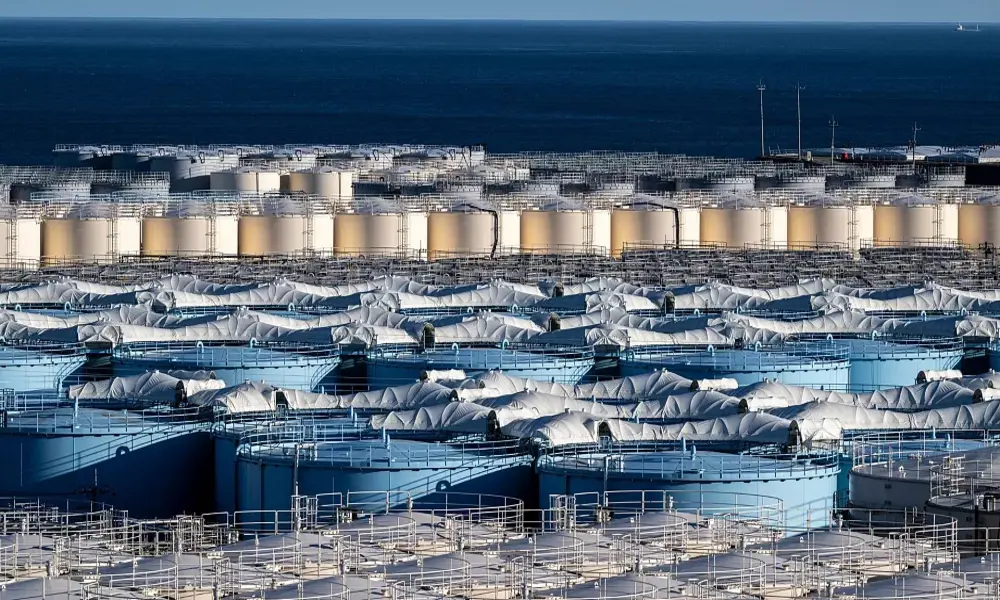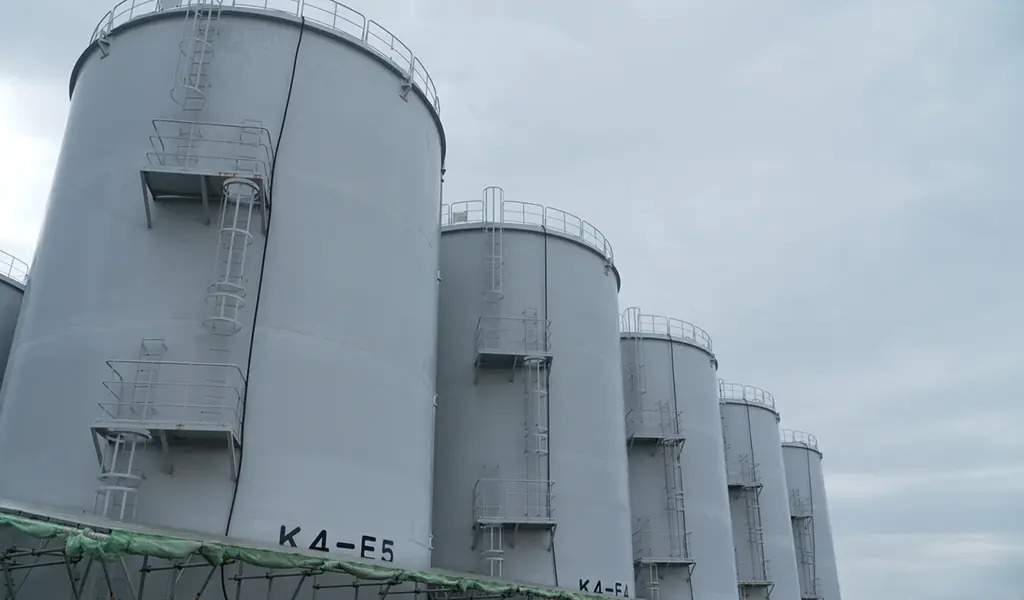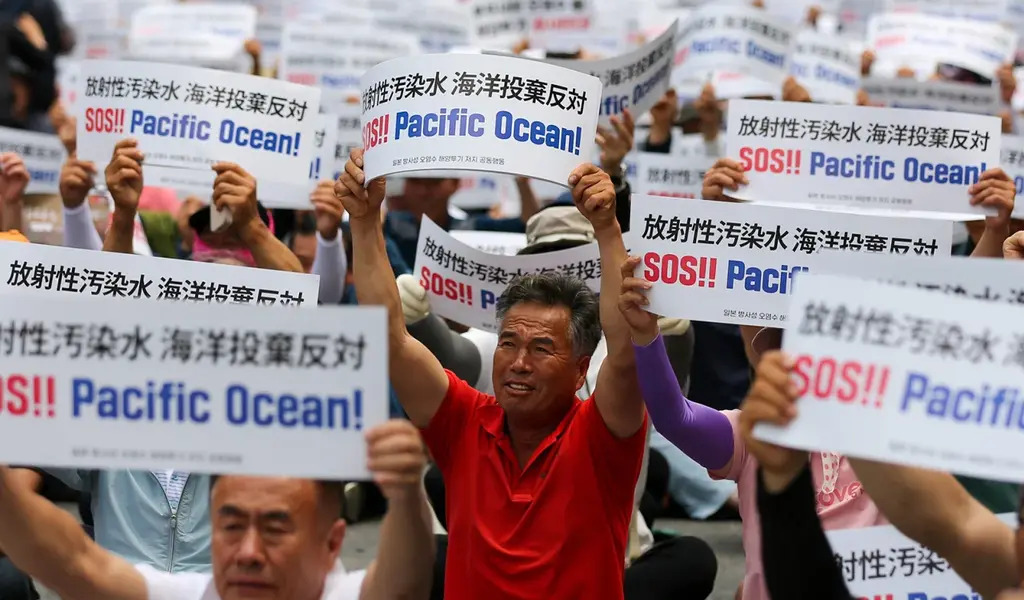News
Japan To Begin Release Of Treated Radioactive Water Into Ocean Following UN Approval

(CTN NEWS) – Following approval from the United Nations’ nuclear watchdog, Japan is set to commence the release of treated radioactive water into the ocean, marking a significant step in a controversial plan that comes 12 years after the Fukushima nuclear meltdown.
The decision to release the treated wastewater has been in progress for several years, prompted by the depletion of available space to contain the contaminated material, as declared by the environment minister in 2019.
Rafael Grossi, the head of the International Atomic Energy Agency (IAEA), arrived in Japan on Tuesday to visit the Fukushima site and present the UN body’s safety review to Prime Minister Fumio Kishida.
However, despite the UN’s approval, neighboring countries’ concerned residents and local fishermen, who continue to experience the repercussions of the 2011 disaster, remain uneasy and unconvinced.
There are doubts cast upon the findings of the IAEA, with China recently expressing that the group’s assessment “does not serve as proof of the legality and legitimacy” of releasing Fukushima’s wastewater.
Here’s the essential information you should know:
Why is this happening?
In 2011, a severe earthquake and tsunami struck, leading to significant damage to the power supply and cooling systems of the Fukushima nuclear plant.
This resulted in the overheating of the reactor cores and the contamination of water within the plant with highly radioactive substances.
To prevent further incidents, fresh water has been continuously pumped into the reactors to cool the fuel debris.
However, in the process, groundwater and rainwater have also seeped into the plant, further increasing the volume of radioactive wastewater that needs to be managed and treated.
The state-owned electricity company Tokyo Electric Power Company (TEPCO) has constructed over 1,000 large tanks to store the current volume of 1.32 million metric tons of wastewater, equivalent to filling over 500 Olympic-sized pools.
However, available space is rapidly diminishing. TEPCO states that constructing additional tanks is not a viable option and that it is necessary to create space in order to safely decommission the plant.
This decommissioning process involves decontaminating facilities, dismantling structures, and completely shutting down operations.
What are the potential risks?
According to TEPCO, the radioactive wastewater can have hazardous elements, but a significant portion of these elements can be removed from the water through treatment processes.
The primary concern lies with a hydrogen isotope called radioactive tritium, which cannot be effectively eliminated using current technologies.
As a result, the plan is to dilute the contaminated water significantly and release it gradually over a span of many years, as emphasized by Japan’s government and the IAEA.
They assert that the concentration of tritium in the released water would be comparable to or even lower than the permissible levels allowed by other countries, meeting international safety and environmental regulations.
They also argue that tritium is naturally present in the environment, found in rainwater, seawater, tap water, and even within the human body, suggesting that releasing small quantities into the ocean should pose no significant harm.
In the IAEA report, Rafael Grossi stated that the discharge of treated water into the sea would have a “negligible radiological impact on people and the environment.”
However, experts hold differing opinions regarding the potential risks associated with this course of action.
The Canadian Nuclear Safety Commission explains that tritium itself is not capable of penetrating the skin, but consuming it in “extremely large quantities” can increase the risk of cancer.
Similarly, the US Nuclear Regulatory Commission acknowledges that any exposure to radiation carries some health risk, but emphasizes that small amounts of tritium are encountered by individuals on a daily basis.
A group of international scientists, including Robert H. Richmond, director of the Kewalo Marine Laboratory at the University of Hawaii at Manoa, is collaborating with the Pacific Island Forum to evaluate the plan for releasing wastewater.
This involves visits to the Fukushima site and meetings with TEPCO, Japanese authorities, and the IAEA. After examining the plan’s details, Richmond criticized it as “ill-advised” and premature.
One concern is that diluting the wastewater may not be sufficient to minimize its impact on marine life.
Richmond explains that pollutants like tritium can traverse various levels of the food chain, including plants, animals, and bacteria, leading to “bioaccumulation” where they accumulate within the marine ecosystem.
Moreover, Richmond highlights that the world’s oceans are already facing significant stress due to climate change, ocean acidification, overfishing, and pollution.
Treating them as a “dumping ground” would exacerbate these challenges, he warns.
The potential risks associated with the wastewater release extend beyond the Asia-Pacific region.
A study conducted in 2012 found evidence that bluefin tuna had transported radionuclides, similar to those found in nuclear wastewater, from Fukushima across the Pacific to California.
Process Of Releasing The Water
The process of releasing the water involves several steps. Initially, the wastewater undergoes treatment to remove as many of the harmful elements as possible.
Following treatment, the water is stored in tanks and subjected to analysis to determine the remaining radioactive levels. A significant portion of the water will undergo a secondary treatment process, as outlined by TEPCO.
Once the necessary treatments have been completed, the wastewater will be diluted to a concentration of 1,500 becquerels of tritium, which is a unit used to measure radioactivity, per liter of clean water.
This dilution process aims to reduce the concentration of tritium before releasing the water into the environment.
For comparison, Japan’s regulatory limit permits a maximum of 60,000 becquerels per liter for tritium in water.
‘The World Health Organization allows up to 10,000 becquerels per liter, while the United States has a more stringent limit of 740 becquerels per liter.
Following the dilution process, the water will be released into the Pacific Ocean via an undersea tunnel located off the coast.
To ensure transparency and compliance with international safety standards, third-party organizations such as the International Atomic Energy Agency (IAEA) will monitor the discharge throughout and after the release.
Rafael Grossi, in the report, stated that this monitoring would ensure the consistent application of relevant international safety standards as outlined by the government of Japan and TEPCO over the course of several decades.
What have other countries said?
The plan has evoked mixed reactions, with both support and skepticism coming from various quarters.
The United States has expressed support for Japan’s decision, with the State Department stating in a 2021 statement that Japan has been transparent in its decision-making process and appears to be adhering to globally accepted nuclear safety standards.
Taiwan’s Atomic Energy Council has indicated that the amount of tritium being released is estimated to be below the detection limit, resulting in minimal impact on Taiwan. The island is situated southwest of Japan.
However, there is greater resistance from Japan’s neighboring countries.
In March, a high-ranking Chinese official expressed concerns about the potential unpredictable harm to the marine environment and human health resulting from the release of the wastewater.
The official emphasized that the Pacific Ocean should not serve as Japan’s disposal site for discharging its nuclear-contaminated water.
The Secretary General of the Pacific Islands Forum, an inter-governmental organization comprising Pacific islands including Australia and New Zealand, also voiced serious concerns in a January op-ed.
He emphasized the need for more data before allowing any ocean release, emphasizing the responsibility to secure a safe and protected future for the coming generations.
In June, South Korean Prime Minister Han Duck-soo expressed support for the plan, even stating that he would be willing to drink the treated wastewater meeting international standards.
However, this statement was met with ridicule by the opposition leader in South Korea.
Do other countries release wastewater as well?
Numerous organizations, including the IAEA, highlight that nuclear power plants worldwide regularly and safely release treated wastewater that contains low levels of tritium.
A spokesperson from the Nuclear Regulatory Commission, a government agency in the United States, confirmed to CNN that nearly all nuclear plants in the country release water with low levels of radioactivity into the waterways where they are situated.
The spokesperson further explained that tritium, although it cannot be filtered out, would require a significant ingestion amount by an individual to even consider the possibility of a health concern.
They emphasized that the radioactive water released into the waterway is extensively diluted by natural flows.
Despite these statements, many scientists remain unconvinced.
Tim Mousseau, a professor of biological sciences at the University of South Carolina, highlighted the lack of sufficient research into the environmental and food-related impacts of tritium, regardless of its common practice among nuclear plants.
Adding to the concerns, Richmond from the University of Hawaii emphasized that the actions of other entities should not serve as an excuse to continue releasing wastewater into the ocean.
He viewed this situation as an opportunity for Japan and the IAEA to alter the prevailing practices for the better.
How does the public perceive the situation?
Residents in the region have expressed significant skepticism, leading some shoppers to take precautions by stocking up on seafood and sea salt, fearing that these products may be affected by the release of wastewater.
In South Korea, there has been a notable increase in sea salt prices, with store owners reporting that their sales have recently doubled, as reported by Reuters.
A viral tweet in Korean claimed to have purchased a three-year supply of seaweed, anchovies, and salt, reflecting the concern among individuals.
According to Reuters, the Korean fisheries authority has announced its intention to intensify monitoring of salt farms for any signs of radioactivity.
Additionally, they will uphold the existing ban on seafood originating from waters near Fukushima.
In response to the plan, members of the Korean public have staged protests, some even wearing gas masks, outside the Japanese embassy in Seoul, as a means of expressing their opposition.
Opinions within the Japanese public are also divided on the issue. A survey conducted by Asahi Shimbun in March revealed that among 1,304 respondents, 51% supported the release of wastewater, while 41% opposed it.
Earlier this year, residents in Tokyo, the capital, took to the streets to protest against the plan.
In Fukushima, the prefecture where the nuclear disaster occurred, local fishermen have been steadfastly against the plan since its inception.
Following the meltdown, fishing operations were suspended for many years, and other countries imposed import restrictions.
Even after the surrounding water and fish returned to safe levels, consumer confidence was never fully restored. Consequently, Fukushima’s fishing industry now represents only a fraction of its former value.
Critics argue that the release of wastewater could inflict further damage on Fukushima’s global and regional reputation, thereby negatively impacting the livelihoods of fishermen.
Earlier this year, one fisherman expressed frustration, stating, “It really feels like they made this decision without our full consent.”
































